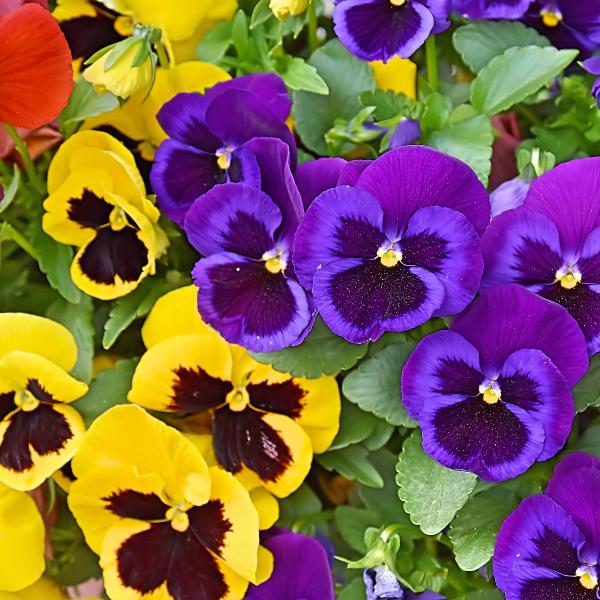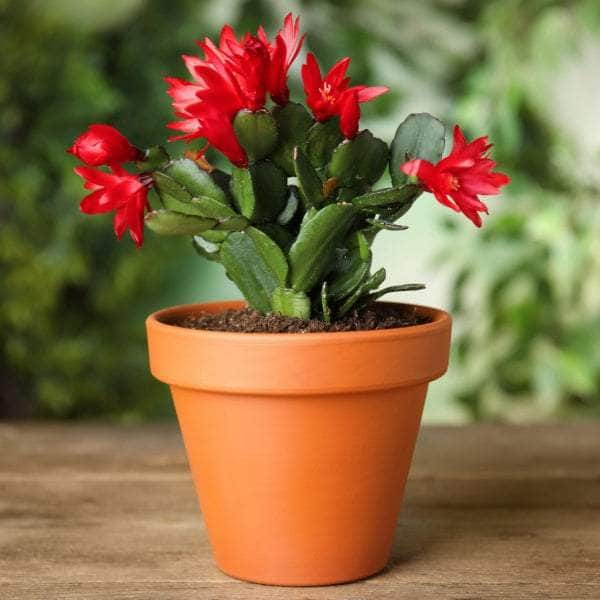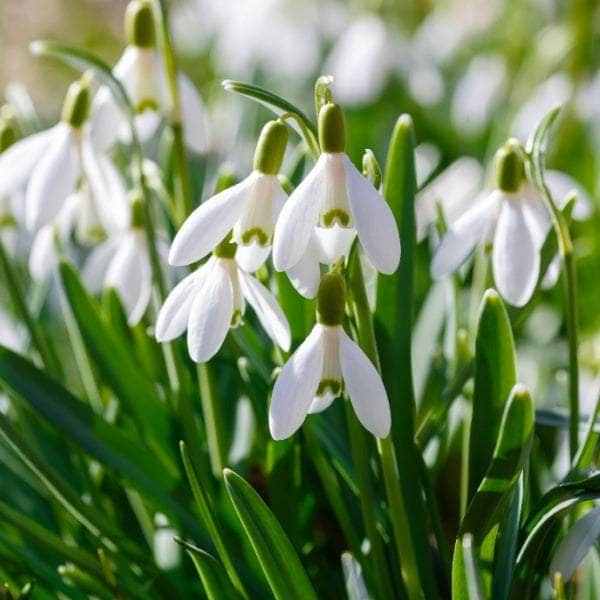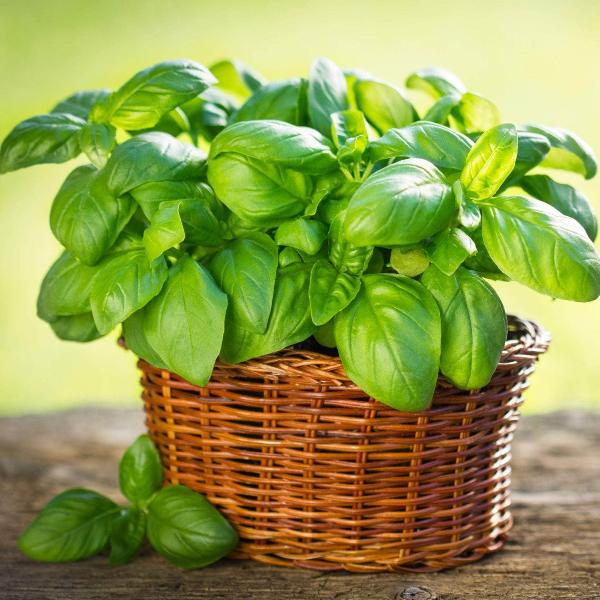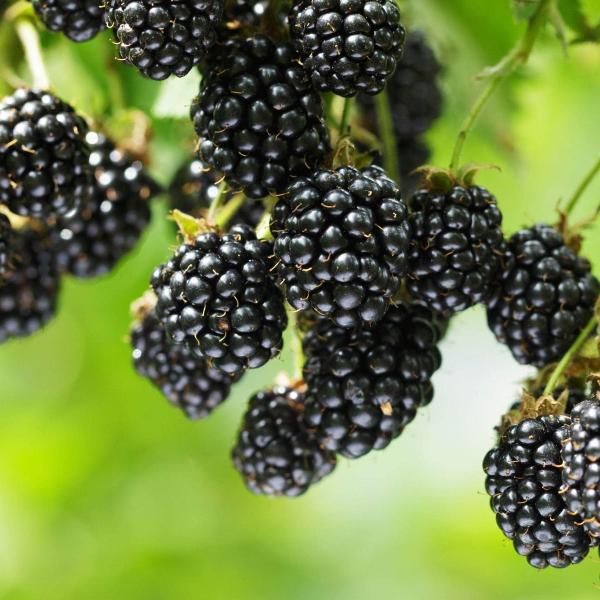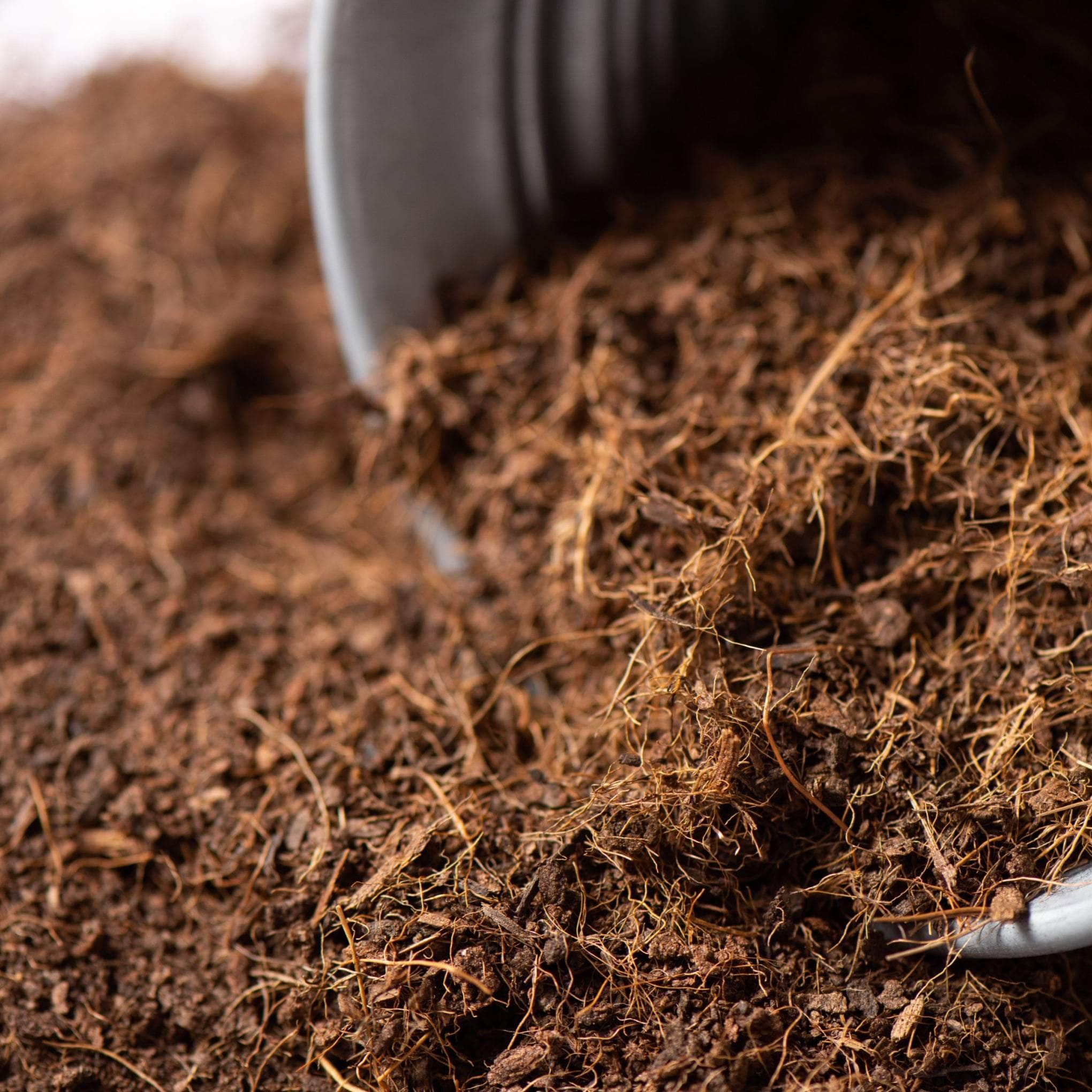The Ultimate Guide to Growing and Caring for Bellis Perennis
Welcome to our comprehensive guide on growing and caring for the charming Bellis Perennis, more commonly known as the English Daisy. This perennial plant, with its bright blooms and hardy nature, is a delightful addition to any garden space.
Whether you're a seasoned gardener or a green-fingered novice, our guide will provide you with all the knowledge you need to cultivate this beautiful flower successfully.
In this blog, we'll delve into the botanical profile of the English Daisy, exploring its scientific name, common names, and the myriad of colourful varieties available. We'll also share expert care tips, from understanding the ideal soil and sunlight conditions to managing common pests.
Whether you're looking to grow English Daisy from seed, or you're interested in understanding its root system and drainage requirements, we've got you covered. So, let's embark on this gardening journey together, and transform your outdoor area into a botanical garden teeming with vibrant English Daisies.
Understanding Bellis Perennis: A Detailed Description

Diving into the world of Bellis Perennis, we find ourselves amidst a fascinating blend of botanical beauty and scientific intrigue. This section aims to provide a comprehensive understanding of this perennial plant, commonly known as the English Daisy. From its botanical profile to its common names and varieties, we'll explore every facet of this charming addition to any garden space.
The Bellis Perennis, with its bright blooms and resilient nature, is a plant that commands attention. Its scientific name and common daisy moniker are just the tip of the iceberg when it comes to understanding this unique flower and plant. So, let's delve deeper into the world of Bellis Perennis and discover why it's a must-have in every plant collection.
The Botanical Profile of Bellis Perennis
Bellis Perennis, more commonly known as the English Daisy, is a perennial herbaceous plant that seldom rises above 20 centimetres in height. With its botanical profile noted for its distinct spoon-shaped leaves and a diameter of around 2 to 5 cm, this plant has a knack for inhabiting and adorning every garden space.
A key characteristic of the Bellis Perennis is its phenomenon of heliotropism. This term refers to the plant's unique capacity for tracking and following the sun, thus their flower heads are always basking in maximum sunlight. The bright blooms are composite, comprised of numerous sessile flowers with white ray florets, frequently tipped red, nestled amidst yellow disc florets.
Regarded as a ‘lawn daisy,’ the Bellis Perennis has an unruly tendency to conquer lawns and proving resistant to eradication even by mowing. Regardless, those who have this tenacious plant gracing their plant collection find it a small price for the cheerful appearance it brings to any border or container. It's a charismatic addition to the botanical garden, unrivalled in the English Daisy's cosmic allure through the long flowering season from March to September.
Common Names and Varieties of Bellis Perennis
English Daisy: One of the most famous names that belongs to Bellis Perennis, admired for its bright bloom and resilience, making it a favourite in every garden.
Lawn Daisy: Aptly named for its tendency to colonise lawns, this variety survives even frequent mowing and adds a touch of green and white to any open space.
Common Daisy: A term used to distinguish Bellis Perennis from other daisy-like flowers, this variety has found a place in almost every plant collection worldwide.
Bellis Perennis: The scientific name, a must-know for every botanical garden enthusiast and for those who prefer a more professional plant pack for their garden space.
Border Container: A variety specially cultivated for growing within border containers, ideal for small space gardening with a love for bright blooms.
Exploring Beautiful Bellis Varieties

Dive into the world of Bellis Perennis and discover the myriad of beautiful Bellis varieties that can transform your garden space. From the captivating charm of double varieties to the vibrant hues of red and pink flowers, these daisy blooms offer a delightful visual treat.
Whether you're looking to add a pop of colour to a small space or create a stunning border container, these plants are a perfect choice. With the right care and flower food, they can become a vibrant part of your plant collection. Let's explore these enchanting varieties together.
The Charm of Double Varieties
Among the beautiful Bellis varieties, the charm of the double variety often stands out. With their bright blooms, similar to daisies, these plants bring a sense of cheer and colour to every garden.
The double varieties are not limited to just the classic white daisy. Ranging from double red to pink flowers, the vibrant hues can transform any small space or border container into a delightful display to capture attention.
Growing and caring for these varieties might require more attention and specific flower food. However, their ability to brighten your garden space and enrich any plant collection is often worth the effort. They stand as a testament to the diversity and fascination of the plant kingdom, waiting to be discovered and appreciated.
Colourful Varieties: From Red to Pink
These bellis varieties thrive with good flower food. Regular feeding with liquid flower food will ensure a healthy, bright bloom. Explore the world of beautiful bellis varieties and find the perfect match for your garden.
English Daisy Care: Tips and Techniques

Caring for English daisies can be a rewarding experience, especially when you see these charming flowers bloom in your garden. This section will provide you with practical tips and techniques to ensure your English daisies thrive. From understanding the ideal soil and sunlight conditions to mastering the watering and humidity requirements, we've got you covered.
We'll also delve into seasonal care tips, guiding you from the early spring to the autumn. So, whether you're a seasoned gardener or a beginner, these care tips for English daisies will help you cultivate a vibrant and healthy garden.
Ideal Soil and Sunlight Conditions
An essential element of English daisy care is to understand the specific soil and sunlight conditions that optimally support its growth. These quaint flowers excel in areas with cool temperatures and summers, preferably in full sun or partial sun.
The choice of soil is also nonnegligible. Loamy soil, rich in organic matter, can provide a well-draining and nutrient-filled environment favourable for the English Daisy. A tad of clay in the soil wouldn't hurt, and if it's moist, it's even better.
So, when you plan for the care of your English daisy, remember these care tips. Not only will they thrive, but this preparation could also help keep them lively every year. Paying attention to these natural factors can invigorate your garden with healthy and vibrant English daisies throughout the seasons.
Watering and Humidity Requirements
The watering and humidity necessities of the English daisy must be considered as paramount care tips for its healthy growth. Despite their robust nature, these sturdy flowers necessitate regular watering to thrive optimally, primarily dependent on the climatic conditions. In regions with high humidity, water your English daisies only when the soil feels dry to touch.
In cooler areas with less humidity, the watering needs tend to spike a bit. The soil needs to maintain a level of moisture; thus, regular waterings become crucial. Abstaining from overwatering is essential since it might lead to waterlogging, which is undesirable for the plant's growth.
Additionally, the English daisy thrives in cool temperatures, therefore, if you live in an area with cool summers, your daisy should be well adapted to the humidity levels. However, constant monitoring and adjustment for watering frequency might be needed throughout the season to keep your English daisies blooming every year. By meeting these watering and humidity requirements, you cultivate a nurturing environment for your daisies to flourish.
Seasonal Care Tips: From Spring to Autumn
Here are the seasonal care tips for your English Daisy from spring to Autumn:
Early Spring: Start the season by encouraging healthy growth. Inspect the English Daisy plants and prune off any deadness that could have accumulated during winter. This provides an open space for new growths to come through. It's also a great time for dividing and replanting to promote new clusters of flowers for the season ahead.
Throughout the Season: After the early spring, the care for English Daisy gets easier. In the warmer days of late spring and summer, these plants require little attention apart from regular watering. Ensure that they receive full to partial sun and are in an area with cool temperatures to ensure proper growth.
Early Autumn: As Autumn approaches, the English Daisy starts to prepare themselves for the colder months. Pay special attention to watering during this period. The plants often need more moisture to withstand the cool temperature.
Therefore, caring for your English Daisy throughout the seasons can be summed up in three words; prune, water, and a careful watch on sunlight exposure and temperature control. These tips should keep your English Daisy healthy and blooming every year.
Propagating English Daisy: A Step-by-Step Guide

The art of propagating English daisies is a rewarding endeavour that can transform any garden space. This section will guide you through the process, providing you with the knowledge and techniques to successfully grow English daisies from seeds and understand their root system and drainage requirements.
Whether you're a seasoned gardener looking to expand your plant collection or a beginner eager to delve into the world of horticulture, this step-by-step guide will equip you with the necessary skills to cultivate these charming flowers.
Growing English Daisy from Seeds
Propagating English daisies from seeds is a gratifying journey for any green thumb and can be a vibrant addition to every garden space. It's a perfect route for beginners aiming to expand their plant collection or for those with a small space but with hefty botanical aspirations.
You'll begin the process of growing an English daisy from seeds by ensuring the conditions are as favourable as possible for the plant's growth. An essential factor to consider is time. English daisies typically bloom from early to midsummer. Nonetheless, under ideal circumstances, and when planned properly, you can expect a very long flowering season.
Next, sow the English Daisy seeds after the last frost. While you may find countless flower and plant packs, it's always best to opt for premium quality English Daisy seeds. This lends certainty in achieving thriving plant life, offering optimal value out of the whole plant pack. Once your seeds are ready, simply plant them in most well-drained soils and wait for nature to do the rest. In no time, you'll find your garden space teeming with these vibrant and cheerful flowers. Remember, the ultimate secret lies in the patience and the love you shower on your growing English daisies.
Understanding the Root System and Drainage Requirements
The root system of the English daisy, Bellis perennis, forms a significant part of its growing process. This dainty flower is quite tolerant when it comes to soil and watering needs, but it requires keen attention towards its root health and drainage.
Understanding its root system is essential. It grows well in most well-drained soils and often tolerates poor soil conditions. This makes it an excellent choice for most people, regardless of the garden space or plant collection in your possession.
Planting Bellis Perennis: When and How?

Planting Bellis Perennis, also known as the English Daisy, is a rewarding experience that adds a touch of charm to any garden. This section will guide you through the process of when and how to plant this delightful flower, ensuring a vibrant and healthy addition to your plant collection.
Whether you're a seasoned gardener or a beginner, understanding the right time to sow English Daisy seeds and the steps involved in planting can make a significant difference in your garden's overall appeal. Let's delve into the details.
Choosing the Right Time to Plant
Planting Bellis Perennis, or as it is commonly known, the English Daisy, is a delightful addition to any garden due to its long flowering season. Essentially, the timing of seed sowing largely depends on the weather conditions of the area. For instance, in climates where minimum temperatures are above -35°C, Bellis Perennis seeds can be sown successfully in early spring, early autumn and even throughout the season.
The key to ensuing a blooming display in your garden lies in respecting the lifecycle of this plant. Plant your Bellis Perennis seeds when the climate is most likely to encourage germination and plant vigour for a flourishing flower and plant assembly. Each Bellis Perennis plant pack will provide you with specific sowing instructions to follow for best results.
Step-by-Step Guide to Planting Bellis Perennis
Choose the right seeds/bulbs: Begin with high-quality Bellis Perennis seeds which can usually be bought from a reputable garden store, or even online. You'll recognise the English Daisy seed as small, brown and oval shaped.
Prepare the soil: Use a garden trowel to prepare your soil, breaking it up and ensuring that it's loose and capable of retaining moisture. This would allow the roots of your Bellis Perennis to grow freely without any hindrance.
Plant your seeds: Follow up by planting the daisy seeds about 1/8 inches deep into the soil. Spacing is important too, sow English Daisy seeds at least 6 inches apart to provide enough space for each plant to mature.
Keep in mind that Bellis Perennis can be sown in early spring or early autumn and will typically bloom throughout the season every year. This dependable flower and plant should be a staple in every garden, elevating your plant collection. Remember to always follow plant pack instructions to ensure a good germination rate!
Common Pests and Diseases: Prevention and Treatment

The journey of caring for your English Daisy doesn't end at planting and watering. A crucial part of the process is understanding the common pests and diseases that could potentially harm your plant. This section will delve into the common threats that your English Daisy might face and how to effectively prevent and treat them.
From aphids to slugs, these pests can cause significant damage if not identified and treated early. But fear not, with the right knowledge and techniques, you can ensure your English Daisy thrives in its environment. Let's explore further.
Identifying Common Pests and Diseases
Prevention is always better than cure. Identify these threats early to ensure the care for your English daisy plant remains unhampered.
Prevention and Treatment Techniques
One of the most critical aspects of English daisy care is learning how to prevent and handle common pests and diseases. English daisies can occasionally be targeted by pests such as aphids and slugs. These little creatures can often be found lurking on the underside of leaves or in moist soil, causing significant damage to your beloved plants. However, these common pests are not invincible and with proper preventative measures and treatment techniques, you can keep your English daisies healthy and flourishing.
First and foremost, it is essential to monitor your English daisies frequently, keeping an eye out for any irregularities or signs of infestation. Any change in the overall health and appearance of your daisies could be a sign of a pest problem. Regularly watering your English daisies, especially in the early spring and early Autumn, can often deter these pests. Maintaining the health of the soil is also crucial. Ensuring that your daisies are planted in a well-drained loamy soil can prevent potential diseases associated with high humidity or overly moist soil conditions.
In the unfortunate event that your English daisies are already infested, there are several treatment options available. One option is the use of organic pesticides, which should be applied carefully according to the instructions. However, pesticide usage should be kept to a minimum, as over-use can adversely affect the overall health of the soil and your surrounding plants. Moreover, natural predators such as ladybirds can also be encouraged into your garden to control the aphid population. No matter which path of treatment you choose, remember - prevention is always better than cure.
Embracing the Beauty of Bellis Perennis in Your Garden

In conclusion, the English Daisy, or Bellis Perennis, is a charming addition to any garden. Its bright blooms and easy care make it a favourite among gardeners. Whether you're planting it in a small space, a border container, or as part of a larger plant collection, the English Daisy will bring a touch of beauty to your garden throughout the season.
Growing from seed, caring for the plant, and dealing with common pests may seem daunting, but with the right knowledge and techniques, you can enjoy the beauty of this flower every year.
Remember, the key to a thriving English Daisy is moist soil, partial to full sun, and regular care.
So, why not embrace the beauty of the English Daisy in your garden?
With its vibrant red and pink flowers, it's sure to be a standout in your botanical garden. Happy gardening!




